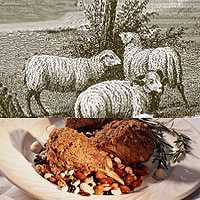health guides
Lamb and Mutton

Varieties
Lamb comes from sheep less than one year of age, and often as young as five to seven months. Special varieties include baby or hot house lamb, which is only six to ten weeks old, and French pré-salé lamb that is raised on salt meadows near the sea. Imported New Zealand lamb, fed on grass rather than grain, has a somewhat stronger taste. Most mutton sold in the United States comes from sheep between one and two years old. It has a more robust taste than lamb.
Lamb and mutton are available in many different cuts: legs, roasts, chops, stew meat, breasts, spareribs, foreshank, and ground lamb. Tender cuts come from the ribs and loin; tougher cuts from the legs and shoulders.
Copyright © 2024 TraceGains, Inc. All rights reserved.
Learn more about TraceGains, the company.
The information presented in the Food Guide is for informational purposes only and was created by a team of US–registered dietitians and food experts. Consult your doctor, practitioner, and/or pharmacist for any health problem and before using any supplements, making dietary changes, or before making any changes in prescribed medications. Information expires December 2024.


 We are proud to announce that
We are proud to announce that  As the market evolves, customers increasingly request a wider variety of omega-3 options for their lipid...
As the market evolves, customers increasingly request a wider variety of omega-3 options for their lipid...  Maintaining healthy glucose levels is crucial for preventing metabolic conditions like diabetes,...
Maintaining healthy glucose levels is crucial for preventing metabolic conditions like diabetes,...  Looking at formulating a new vitamin blend? Discover
Looking at formulating a new vitamin blend? Discover 







































